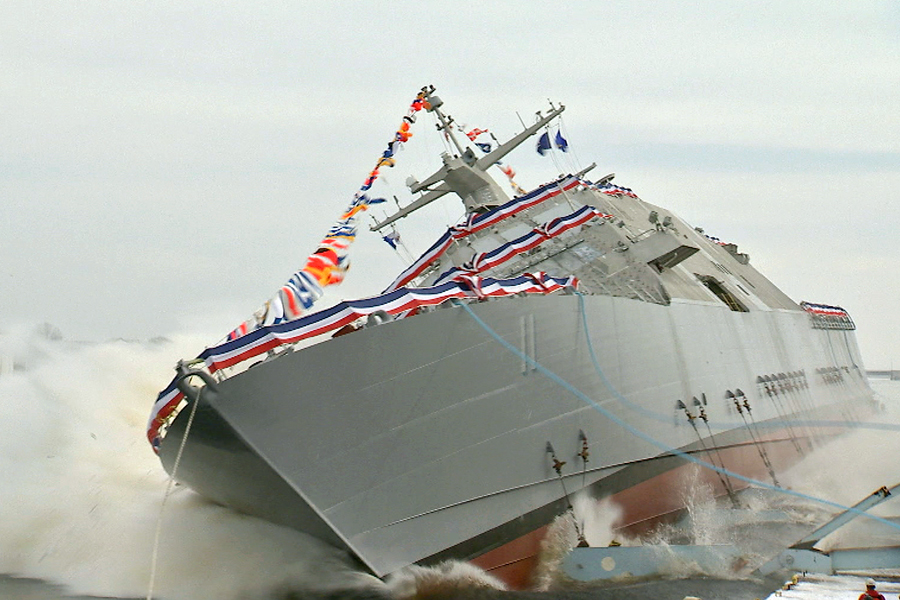
Chief of Naval Operations Adm. John Richardson and acquisition chief Sean Stackley created a Littoral Combat Ship Review Team to help guide the program as the LCS fleet grows rapidly and deploys in numbers, according to a Feb. 29 memo obtained by USNI News.
“With six Littoral Combat Ships (LCS) in service and two extended LCS deployments overseas to learn from, the Navy has gained significant experience with this new fleet asset,” the memo reads.
“Looking forward, the Navy will receive delivery of multiple ships per year resulting in a stead expansion of deployed hulls and growing homeports. We must leverage all that we have learned operating and maintaining these ships as we prepare for significant numbers of LCSs in the fleet.”
Richardson and Stackley tasked three officials – Deputy Chief of Naval Operations For Warfare Systems (OPNAV N9) Brian Persons, Commander of Naval Surface Forces Vice Adm. Tom Rowden, and Stackley’s Principle Military Deputy Vice Adm. David Johnson – with leading the review of the LCS’s crewing, operations, training and maintenance.
A Navy official told USNI News the review team follows in a line of organizations set up to help get the LCS fleet off to a successful start. The Program Executive Office for LCS was established in 2011 to oversee shipbuilding and mission package design. The LCS Council was created in 2013 to help get the first LCS, USS Freedom (LCS-1), out for its first deployment out of Singapore. And now the LCS Review Team will look at the challenges and opportunities ahead as the fleet grows rapidly – the Navy should eventually begin accepting four a year – and deployments shift from being designed to learn about the ship and its capabilities to being tailored to evolving global threats.
Among the topics the review team will address is the manning requirements and the crewing construct – currently three crews manning two ships, one of which is forward-deployed; assessing how to balance simulated and on-hull training; evaluating whether the current contractor-based maintenance model will fully support the ships while forward deployed; looking at the operational and warfighting capability in the mission packages and how to best deploy them based on theater requirements; and how many mission modules the Navy would need to buy based on any changes recommended to the LCS warfighting concept.
Current plans say each LCS will be capable of operating either a surface warfare or a mine countermeasures mission package – or eventually an anti-submarine warfare package – regardless of the ship variant. However, the Freedom-variant ships have only deployed with the surface warfare package and the Independence-variant ships have primarily worked with the MCM package, which is underdoing changes of its own. Many have wondered if the two variants would share the missions equally or would end up specializing in one or the other – or if the clearly-defined mission packages might one day blend together to become more of a mix-and-match capability. Much like the future frigate will permanently have onboard both surface and anti-sub warfare capabilities, the LCS program could blur the lines between the packages to meet the operational needs of the combatant commander that owns the ship.
The Navy official said nothing has been predecided and the review team has the freedom to make any recommendations they wish based on the aggregate experience of the fleet thus far.





